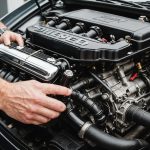Automatic Emergency Braking (AEB) systems represent one of the most significant advancements in automotive safety technology. By automatically applying the brakes when an imminent collision is detected, these systems can reduce the severity of crashes or even prevent them altogether. However, like any sophisticated technology, the AEB system in your vehicle needs to be fine-tuned for optimal performance. This article will guide you through the various steps and considerations to optimize the settings of your vehicle’s AEB system.
Understanding Your Vehicle’s AEB System
A robust understanding of your vehicle’s AEB system is the first step towards effective optimization. Most modern AEB systems use a combination of radar, cameras, and sensors to detect potential collisions. This multi-faceted approach allows for accurate detection of obstacles and timely application of brakes. The specific functionalities and settings can vary between different car manufacturers and models. Therefore, consulting your vehicle’s manual can provide valuable insights into the unique features of your AEB system.
Additional reading : How should you configure the traction control system for driving on icy UK roads?
When it comes to fine-tuning, it is crucial to grasp the basic operating principles and default settings of your AEB system. For example, some systems allow you to adjust sensitivity levels, timing of alerts, and the strength of braking force. Understanding these parameters will enable you to make informed decisions about what adjustments may be necessary for your driving habits and conditions.
Moreover, familiarizing yourself with the indicators and alerts that your AEB system provides can enhance your overall driving experience. These alerts serve as early warnings, giving you ample time to react even before the brakes are applied automatically. By keeping an eye on these indicators, you can better gauge the effectiveness of your AEB system and make adjustments as needed.
Have you seen this : What are the safety implications of using non-OEM parts in vehicle repairs?
Customizing Sensitivity Levels
One of the most critical settings you can adjust in your AEB system is its sensitivity level. Sensitivity determines how early the system detects potential obstacles and initiates braking. While higher sensitivity can provide quicker responses, it may also lead to false alarms and unnecessary braking. On the other hand, lower sensitivity may reduce the frequency of false alarms but can delay the system’s response time.
To find the right balance, start by experimenting with the medium sensitivity setting, if available. Drive in different environments—urban areas, highways, and rural roads—to observe how the system reacts in each scenario. Pay attention to the frequency of alerts and the system’s overall responsiveness. If you find that the system is too quick to apply the brakes, consider lowering the sensitivity. Conversely, if the system seems sluggish, you might want to increase the sensitivity.
It’s also beneficial to consider your driving habits and conditions. For instance, if you frequently drive in heavy traffic, higher sensitivity might be more appropriate to ensure quick responses. In contrast, for long highway drives with minimal traffic, a lower sensitivity level may suffice. Remember, the goal is to optimize the system for your specific needs, ensuring that it enhances safety without becoming a nuisance.
Calibrating Alert Timings and Strength
Another essential aspect of optimizing your AEB system is calibrating the timings and strength of alerts. Many systems offer multiple alert stages—visual, audible, and tactile—before the brakes are applied. The timing of these alerts can significantly impact your reaction time and the system’s overall effectiveness. Similarly, the strength of braking force can be adjusted to suit different driving conditions and preferences.
Begin by assessing the default alert timings and braking force. Drive in various conditions to determine how well the current settings align with your expectations. If the alerts seem too late or too early, make incremental adjustments and retest the system. The goal is to find a timing that provides sufficient warning without overwhelming you with false alerts.
The strength of the braking force is another crucial factor. Some drivers prefer a more aggressive braking force for immediate stopping power, while others might favor a gentler approach to avoid abrupt stops. Adjust the braking force based on your comfort level and driving conditions. For instance, in slippery conditions, a gentler braking force might be more effective to prevent skidding.
Additionally, consider how the AEB system interacts with other safety features in your vehicle, such as lane-keeping assist and adaptive cruise control. Ensuring that these systems work harmoniously can further enhance your overall driving safety.
Regular Maintenance and Updates
Optimizing your AEB system is not a one-time task. Regular maintenance and software updates are crucial to keeping the system functioning at its best. Car manufacturers frequently release updates to improve the performance and accuracy of AEB systems. Keeping your system up-to-date ensures that you benefit from the latest advancements and enhancements.
Start by scheduling routine maintenance checks with your dealership or a trusted mechanic. These checks should include a thorough inspection of the AEB system’s sensors, cameras, and radar units. Any misalignment or obstruction can significantly impact the system’s performance. Cleaning the sensors and cameras regularly can also help maintain their accuracy.
Next, check for software updates periodically. Many modern vehicles provide notifications for available updates, but it’s also a good practice to check manually. These updates can include important fixes, new features, and improved algorithms that enhance the system’s effectiveness.
Lastly, stay informed about any recalls or service bulletins related to your vehicle’s AEB system. Addressing these promptly can prevent potential issues and ensure that your system operates as intended. By committing to regular maintenance and updates, you can maximize the performance and reliability of your AEB system, ensuring optimal safety on the road.
Training and Awareness
Even the most advanced AEB system cannot replace the importance of driver awareness and training. Understanding how to interact with the system and being aware of its limitations is crucial for safe driving. Many drivers may not fully grasp how their AEB system works or how to respond to its alerts effectively. Investing time in training and education can bridge this gap.
Start by reviewing the user manual and any available training materials provided by the manufacturer. These resources can offer valuable insights into the operation, settings, and limitations of your AEB system. Some manufacturers also offer online tutorials and training sessions, which can be beneficial for gaining a deeper understanding of the system’s functionalities.
Additionally, consider participating in advanced driving courses that focus on the use of modern safety technologies. These courses can provide hands-on experience and practical tips for interacting with AEB systems and other safety features. By enhancing your driving skills and understanding of the system, you can make more informed decisions and respond effectively to alerts.
Lastly, stay informed about best practices and advancements in automotive safety technology. Joining online forums, reading industry publications, and following reputable automotive blogs can keep you updated on the latest trends and tips. By staying engaged and informed, you can continuously improve your driving safety and make the most of your AEB system.
Optimizing the settings of your vehicle’s automatic emergency braking system requires a combination of understanding, customization, regular maintenance, and training. By familiarizing yourselves with the system’s functionalities, adjusting sensitivity levels, calibrating alert timings and strength, committing to regular maintenance, and investing in driver training, you can achieve optimal performance and enhance your overall driving safety.
Remember, the goal is to tailor the AEB system to your specific needs and driving conditions. By taking a proactive approach, you can ensure that your AEB system operates effectively, providing an additional layer of safety and peace of mind on the road. Stay informed, stay engaged, and drive safely.











